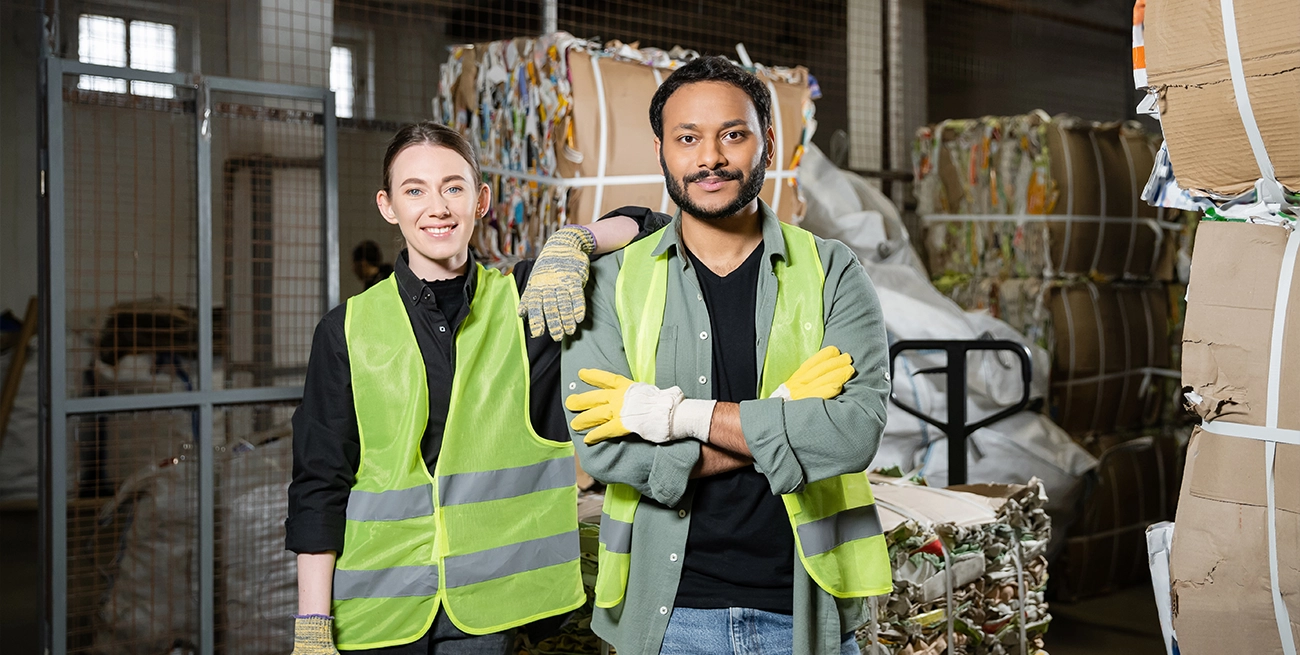How Recycled Materials Are Being Used in Industrial Supplies

Recycled materials are transforming industrial supply chains, providing cost savings, regulatory benefits, and performance improvements. Two main sources—post-consumer (PCR) and pre-consumer or post-industrial (PIR)—are shaping the use of recycled content across a range of industrial applications.
PCR vs. PIR: Purposes and Practical Uses
- Post-consumer recycled content (PCR) comes from discarded materials collected after consumer use—like bottles or packaging. That content diverts waste from landfills, reduces virgin resource demand, and supports recycling systems.
- Post-industrial recycled content (PIR) includes production scrap or offcuts. PIR tends to have fewer contaminants and consistent quality, making it suitable for regulated industrial needs.
PCR helps fulfill sustainability mandates and build local recycling markets, while PIR allows incorporation into high-performance products without quality compromise.
Recycled Plastics in Components and Packaging
Thermoplastics derived from PCR or PIR are increasingly used in injection molded parts. By blending recycled and virgin resins, manufacturers reduce raw material use without sacrificing part integrity. In Europe, major parts suppliers incorporated around 20% recycled plastics into thousands of products early on.
PCR plastic in packaging yields up to 95% energy savings and significant emissions reductions compared to virgin plastic production. That leads to lower costs and improved regulatory compliance.
Metals, Cement, and Other Raw Materials
Aluminum recycling is highly efficient: recycled aluminum uses only around 5% of the energy needed for new production, with over 90% of industrial aluminum recycled in key sectors. Steel and other metals offer similar benefits, cutting emissions by more than 60%.
In construction, industrial byproducts like fly ash and slag are reused in concrete as cement substitutes. That reduces greenhouse gas emissions and improves concrete durability.
Recycled gypsum from building waste helps curb methane and hydrogen sulfide releases in landfills, providing both environmental and structural performance benefits.
Closed‑Loop Recycling and Circular Models
Closed-loop recycling aims to reintegrate materials into the same product indefinitely. Metals like aluminum are ideal candidates; plastics remain more challenging due to quality degradation through repeated processing. Industrial steel, glass, rubber, and gypsum can also support near-closed recycling models.
Circular procurement strategies and evolving regulations encourage industrial buyers to specify recycled content and end-of-life recovery programs.
Material Efficiency and Supply‑Chain Impacts
Incorporating recycled content improves resource efficiency—cutting waste, reducing landfill costs, and decreasing raw material imports. Plastic recycling preserves more than 70% energy compared to virgin plastic.
Industrial use of recycled materials supports recycling infrastructure—creating new jobs and local processing centers. For example, recycling and reuse sectors support hundreds of thousands of jobs and billions in wages annually.
Quality Control in Recycled Materials
Post-consumer recycled materials can contain contaminants that affect performance; sorting, cleaning, and adopting advanced recycling (chemical or mechanical) reduces that risk. Post-industrial recycled content tends to be cleaner and more suitable for high-spec applications. Technical evaluation of tensile, thermal, and chemical properties should guide materials selection.
Regulatory Drivers and Procurement Trends
Governments are increasingly requiring recycled content in public and industrial purchases. Product labels and recycled content mandates aim to ensure traceability and foster recycling markets. Some states mandate minimum post-consumer recycled content percentages in certain product categories.
Considerations for Industrial Buyers
- Match recycled content type (PCR vs PIR) to performance needs.
- Prioritize products with mill-validated recycled-content data.
- Conduct pilot testing to confirm material performance.
- Monitor supplier certifications and testing methods.
- Use closed-loop partnerships or take-back agreements to reclaim materials.
The move toward recycled content in industrial supplies is driven by clear benefits: lower costs, improved performance, regulatory compliance, and environmental stewardship. Each shared batch of recycled resin, scrap metal, or gypsum adds value—and opens doors to smarter, more resilient sourcing.
Stay alert to new recycling technologies, changing regulations, and real-world product data to keep supply chains ready for the next wave of sustainability advancements.


